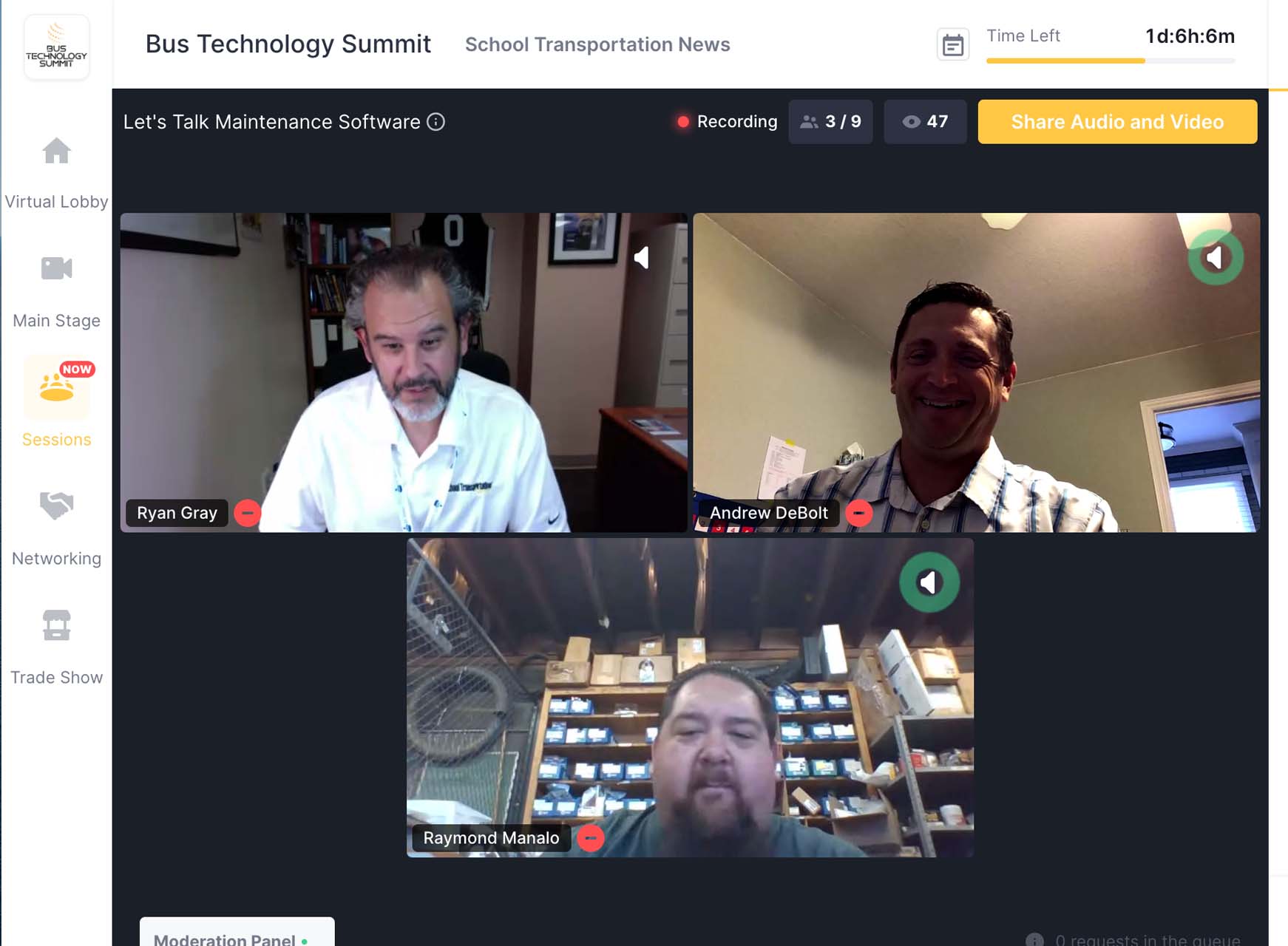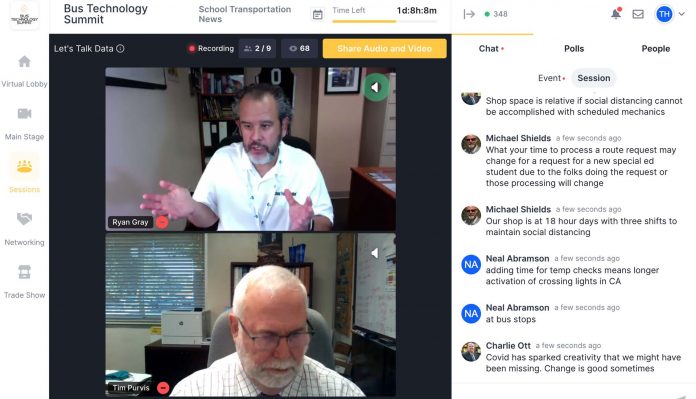When it comes to collecting data and analyzing results, what may have been deemed important prior to the COVID-19 pandemic now might not be at the forefront of transportation operator’s minds.
Tim Purvis, director of transportation for Poway Unified School District near San Diego, discussed key performance indicators (KPI’s) and department goals during the “Let’s Talk” Data session on Wednesday.
He said six months ago, a virtual session or conference like the Bus Technology Summit was unheard of, at least in student transportation circles. But like everything else amid COVID-19, things change. One of those changes could be related to transportation department goals, which Purvis said he prefers to reference rather than KPI’s. He said the same standards that were going to lead districts through the 2020-2021 school year now can be much different, especially where students are attending virtual classes.
He asked attendees these three questions to get them thinking about what they hope to gain from this nothing-like-normal school year.
- Do your established goals drive your key performance indicators (KPI), and have you reevaluated those goals?
- Are your current goals COVID-19 driven, relative to your current needs?
- Have you assessed KPIs, if you have them, and how do they now relate to the COVID-19 pandemic?
To get through the pandemic, Purvis advised that all transportation directors and bus companies need to be nimble and flexible. He said even when the current pandemic finally passes, operations nationwide may never go back to the old normal, at least not fully. He said the new normal gives the industry new opportunities.
Meanwhile, Poway Unified’s transportation department has shifted goals since the spring. Purvis said his staff is not tracking student ridership but instead focusing on timing. He shared that they are concerned with the public having confidence in the organization’s ability to protect their children from the virus. He said communication with the community is key as transportation directors can explain their health checking systems, if they have one, and how school buses are being disinfected.
Pre COVID-19, Purvis was looking at on-time safety checks, preventative maintenance scheduling, and contracting out bus repairs. Now he questions if his route times will need to be expanded, due to cleaning and health screenings and labor costs as it relates to that route time.
Regardless of if a district is small or large, having data to back up the software and resources used is key.

In another ‘Let’s Talk’ session on Wednesday that focused on maintenance software, Andrew DeBolt, lead equipment mechanic for San Jose Unified School District in northern California, said the size of one’s district can determine what transportation mechanics are trying to accomplish with software.
One of the greatest challenges for him, he shared, has been working from home, as it’s been harder for him to communicate and share data with his associates. Instead, he needs a solution that’s easy to use so he can access the data remotely. DeBolt said getting data from the software is more crucial now than ever to help transportation operations navigate these times.
While San Jose USD has been keeping up on preventive maintenance of school buses, almost more efficiently than in the past. The mechanics have time to maintain or update the buses absent their normal workload. All batteries were disconnected and fuel tanks were filled when school shut down in March, to help mitigate some of the sitting challenges before they happened.
Related: Maximizing Fleet Operations for Student Transportation During COVID-19
Related: Keeping Stride
Related: COVID-19 Uncertainty Keeps School Bus Garage Experts on Their Toes
Related: August 2020
Related: (STN Podcast E20) Transportation During COVID-19: Getting South Carolina School Buses Ready to Roll
Now, he said staff is keeping buses in “road-ready condition,” yet he shared his district probably isn’t going back to in-person education until the end of the first semester.
DeBolt said he has been able to digitize maintenance forms, which helps capture data faster and allows for easier decision making on those results. He said now, technicians instantaneously receive requests as they are submitted, instead of seeing paperwork stacking up.
In terms of software, DeBolt said the sky is the limit when it comes to offerings, but he recommends first identifying programs that integrate well with existing equipment to eliminate the need, for example, to switch back and forth between browser windows to pull data. He echoed an attendee comment made during his session by saying simplicity of use is key.
Maintenance software can also help with parts inventory, as it tells technicians when they need certain parts. Raymond Manalo, the fleet manager for Twin Rivers Unified School District in Sacramento, California, hopped into the discussion and said maintenance software has helped with his parts department, especially in terms of simplifying parts needed and establishing a clear line of communication for ordering.














